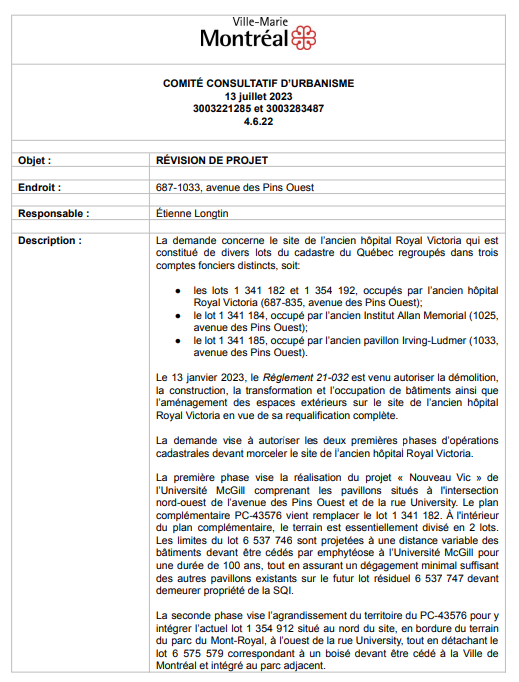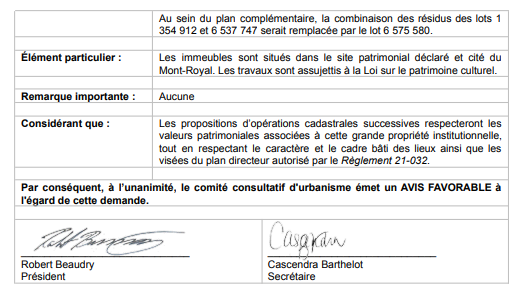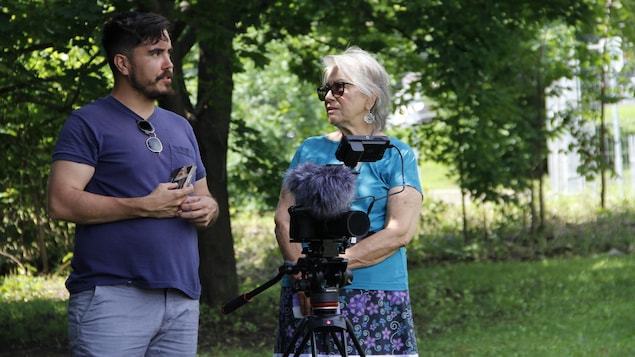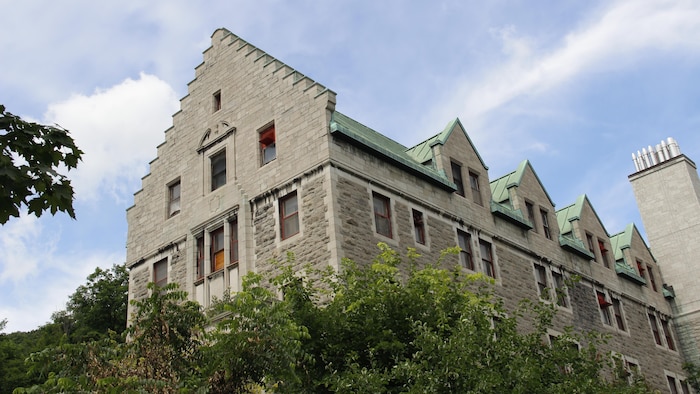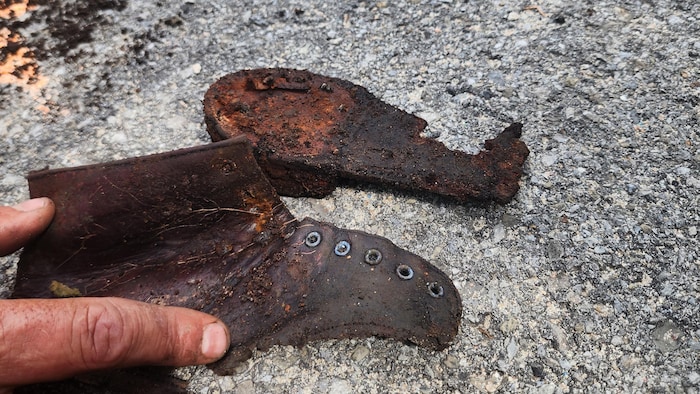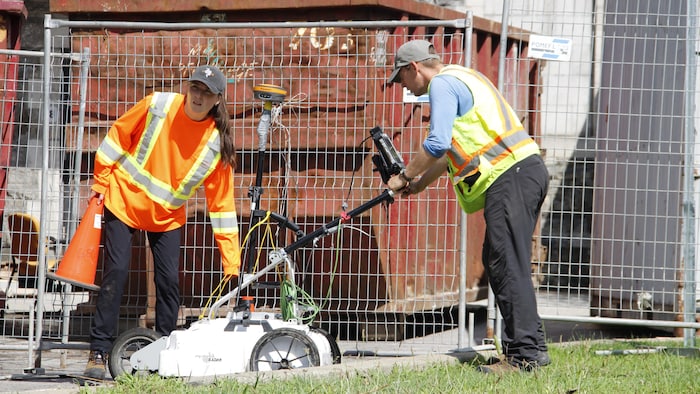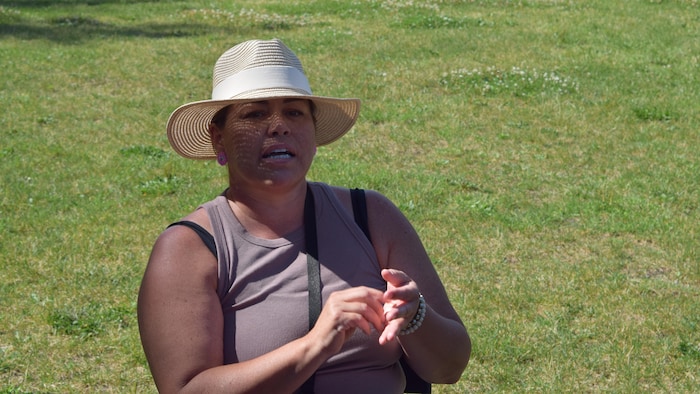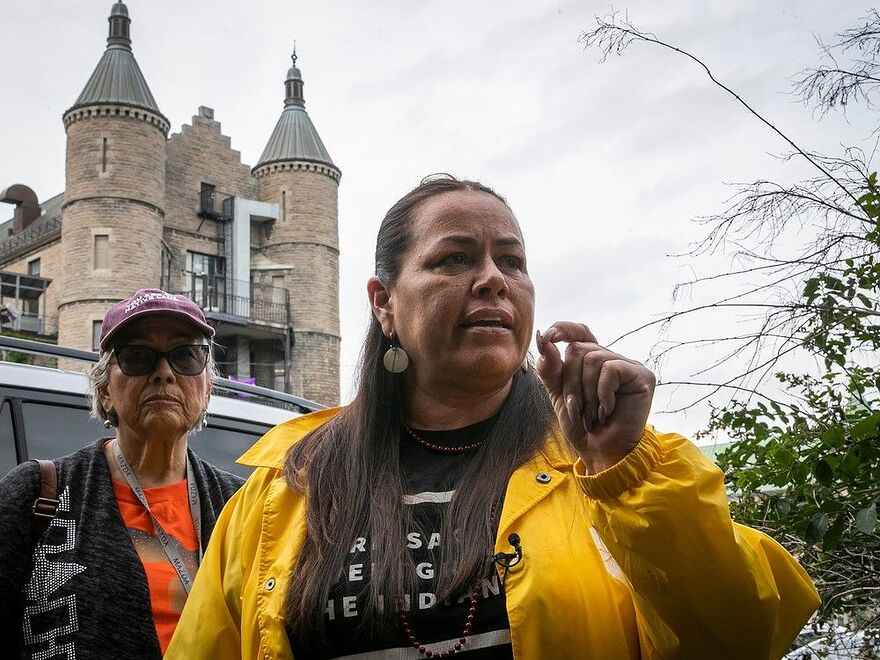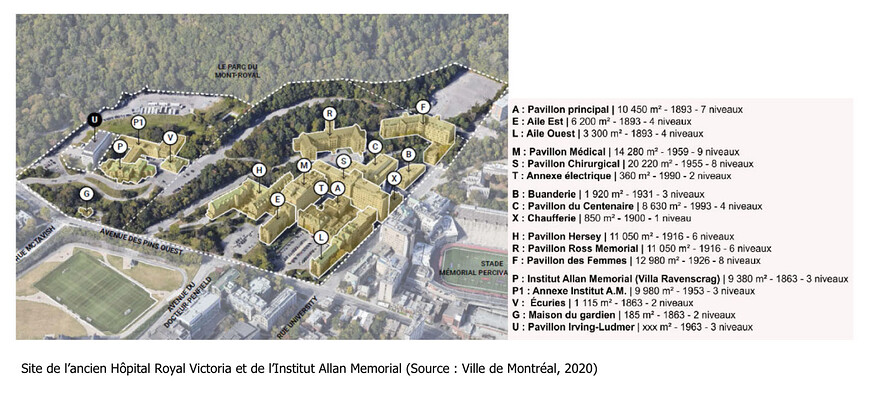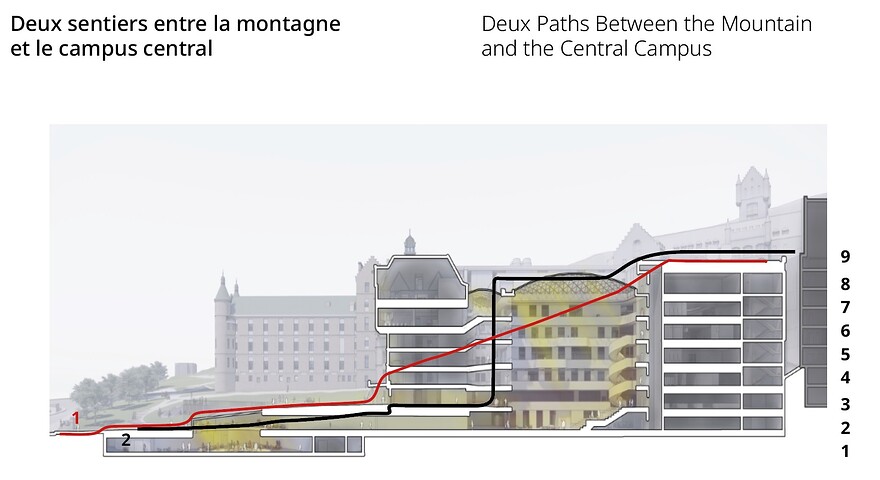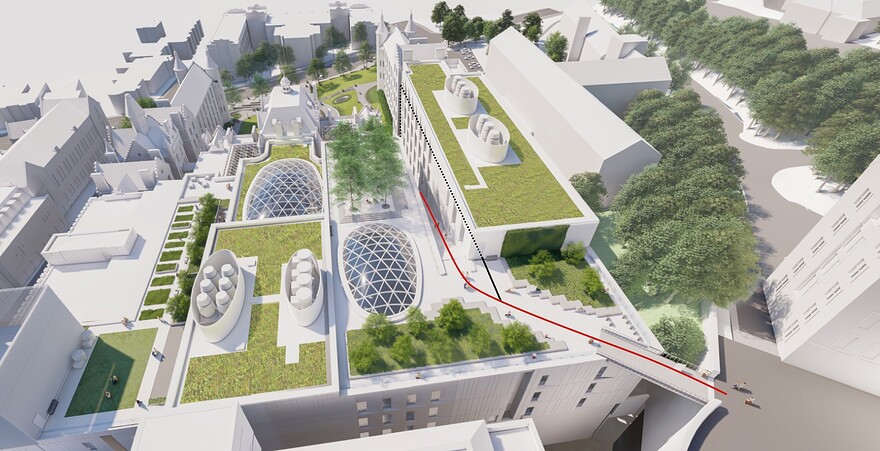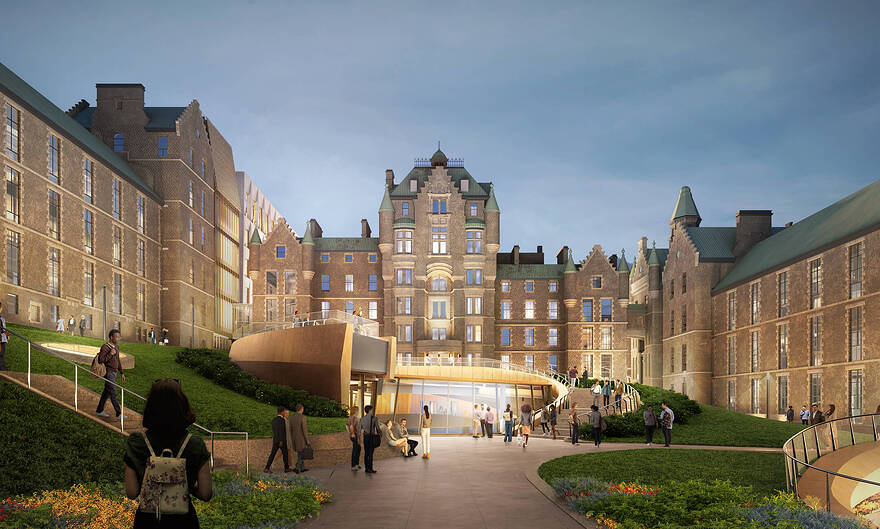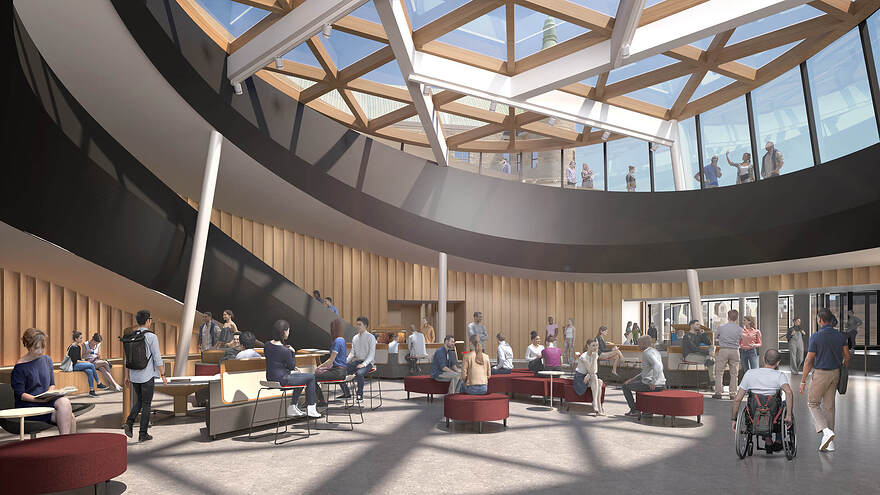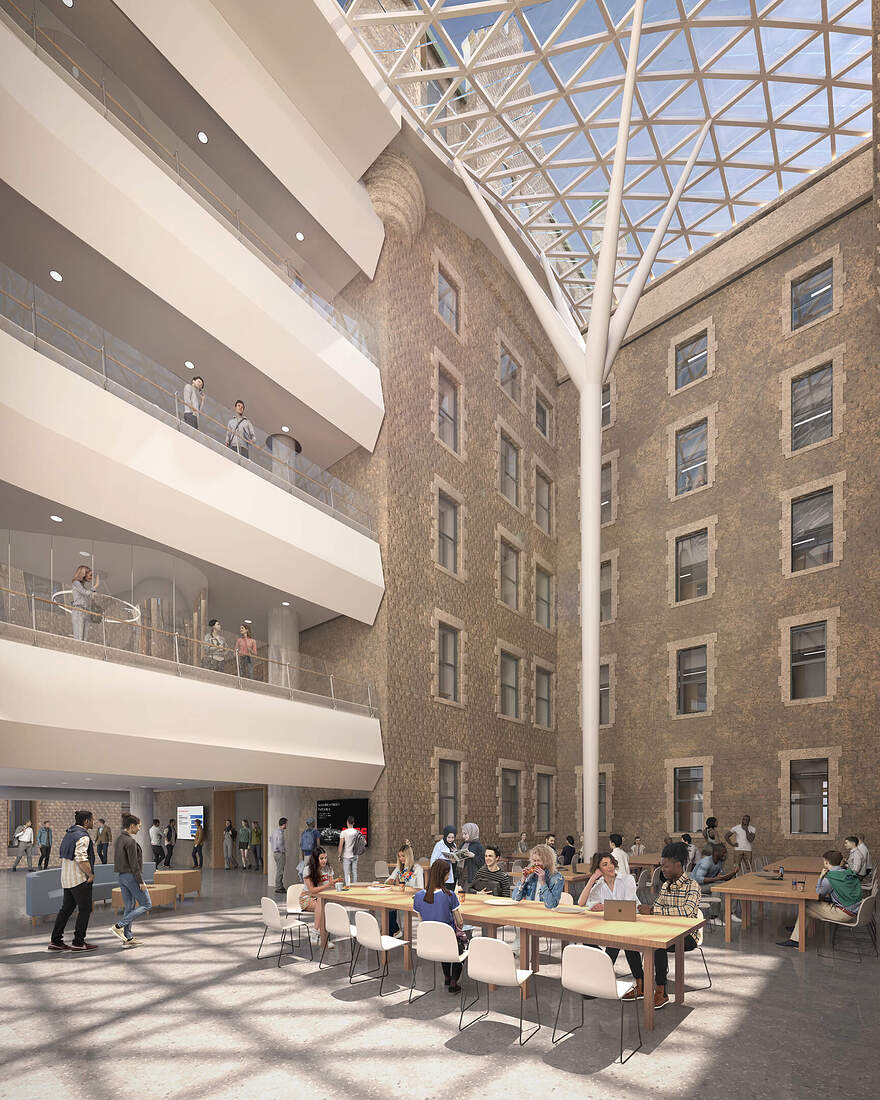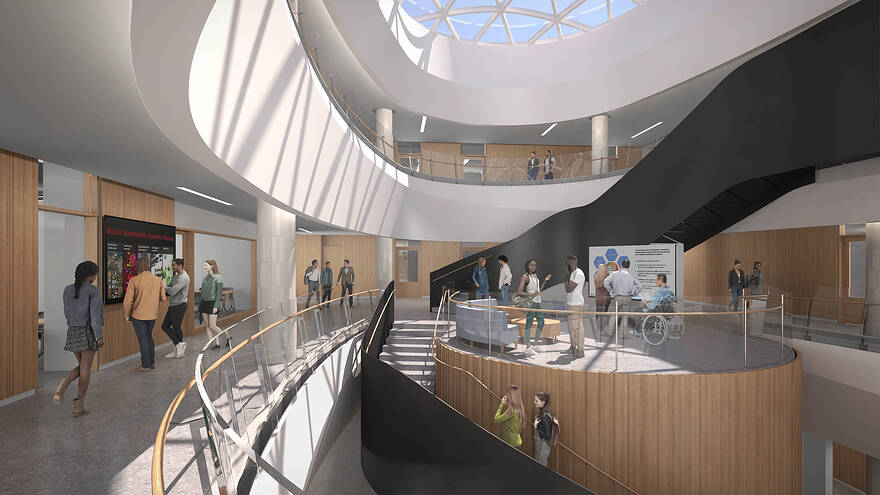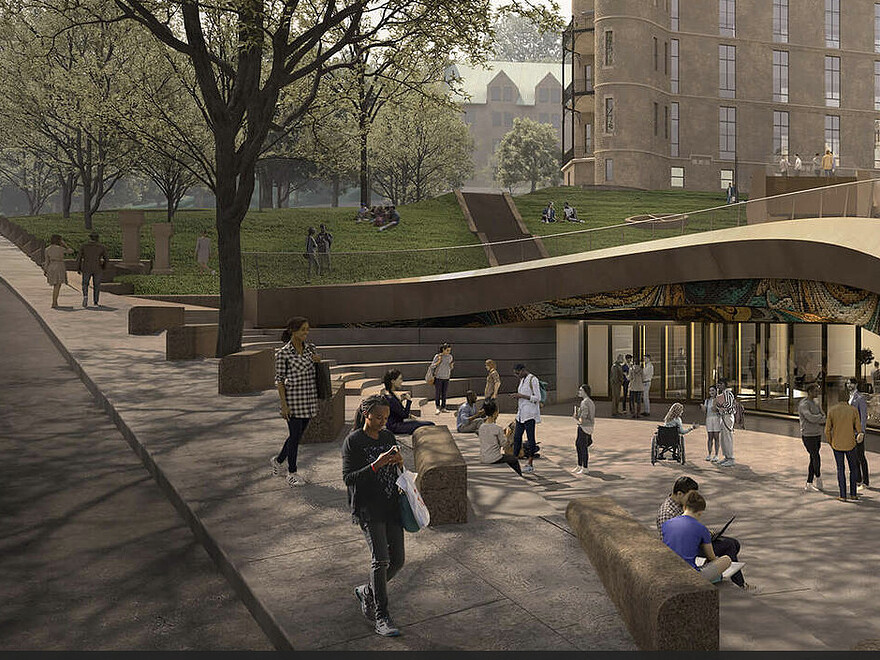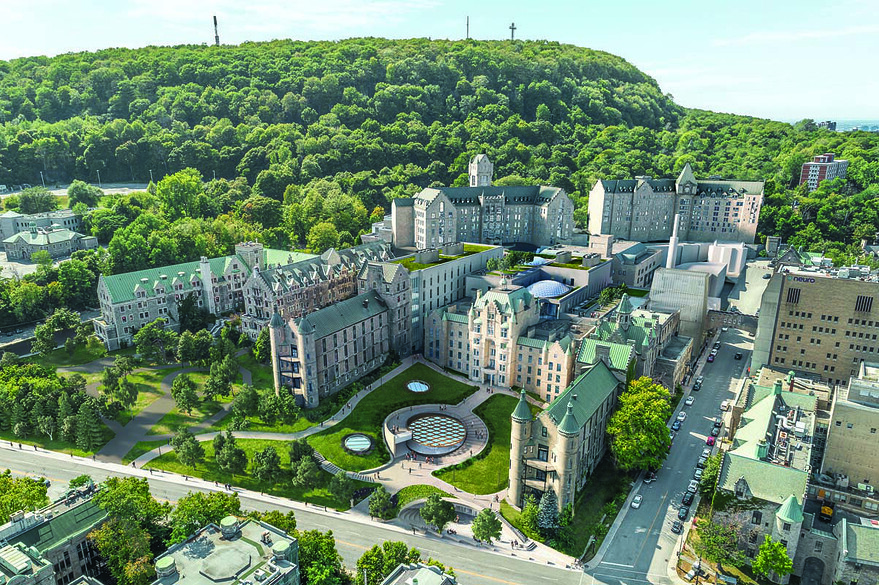Fouilles à l’hôpital Royal Victoria de Montréal : les fragments d’une petite botte trouvés
Cette découverte se déroule dans un contexte de bras de fer de plus en plus apparent entre les Mères mohawks, la Société québécoise des infrastructures (SQI) et l’Université McGill.
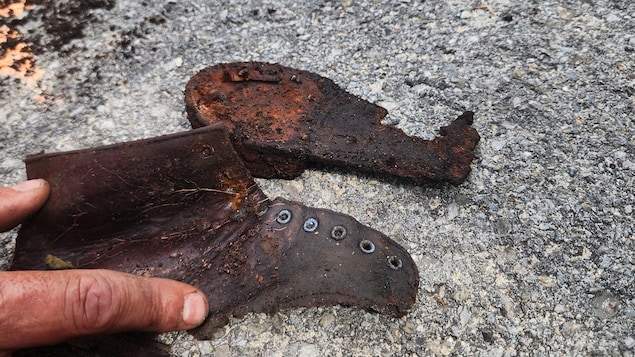
Les fragments d’une botte ont été trouvés il y a deux semaines sur le site de l’ancien hôpital Royal Victoria.
PHOTO : GRACIEUSETÉ
Myriam Boulianne
Publié à 4 h 00 HAE
Des « fragments d’une botte » ont été trouvés il y a deux semaines sur le site de l’ancien hôpital Royal Victoria où se déroulent présentement des fouilles dans le but de trouver de possibles sépultures autochtones. Les origines de l’objet demeurent inconnues et les parties concernées appellent à la prudence.
Comment ont-ils été trouvés?
En juin, des chiens spécialisés dans la détection de restes humains ont été envoyés sur le site. À la suite de cet exercice, les archéologues ont déterré des fragments d’une botte dans une zone qui avait été ciblée par les chiens, selon Philippe Blouin, anthropologue et conseiller des Mères mohawks.
Selon ce dernier, il s’agirait d’une chaussure de cuir de taille pour enfants et les morceaux retrouvés dateraient des années 1960 ou avant.
La SQI a quant à elle confirmé cette découverte dans un courriel, mais n’a pas voulu s’avancer sur une estimation de date. Elle précise toutefois que ces fragments d’une botte ont été trouvés à deux mètres de profondeur et avec d’autres artefacts typiques des remblais de la première moitié du XXe siècle, comme des fragments de pipes en terre cuite et des isolateurs électriques en porcelaine, entre autres.
Pourquoi le site de l’ancien hôpital Royal Victoria est ciblé par les fouilles?
Dans les années 1950 et 1960, des expérimentations controversées de la Central Intelligence Agency (CIA) ont eu lieu sur le site. Après avoir recueilli des témoignages, les Mères mohawks (Kanien’kehá:ka kahnistensera), un groupe d’aînées de Kahnawake, croient que des enfants autochtones ayant participé au programme pourraient y avoir été enterrés anonymement.
L’institution québécoise ajoute que les archéologues ont confirmé qu’il est très fréquent de retrouver des débris de bottes et chaussures et qu’habituellement ces objets ne sont pas conservés, mais qu’en raison de la nature délicate des fouilles, les fragments étaient conservés en sécurité dans les laboratoires.
Aucune analyse n’est prévue et aucun autre élément suspect justifiant un arrêt des travaux ou des précautions supplémentaires à prendre au terrain n’ont été observés en lien avec cet objet, poursuit la SQI.
Elle ajoute que même si les fragments ont été trouvés dans une zone ciblée par les chiens renifleurs, il faut éviter de faire des corrélations hâtives.
Les archéologues ont aussi déterré une robe sur le site. Toutefois, tant les Mères mohawks que la SQI s’entendent pour dire qu’elle est plus récente. La SQI précise qu’elle a été retrouvée dans une couche de remblai de 1995.
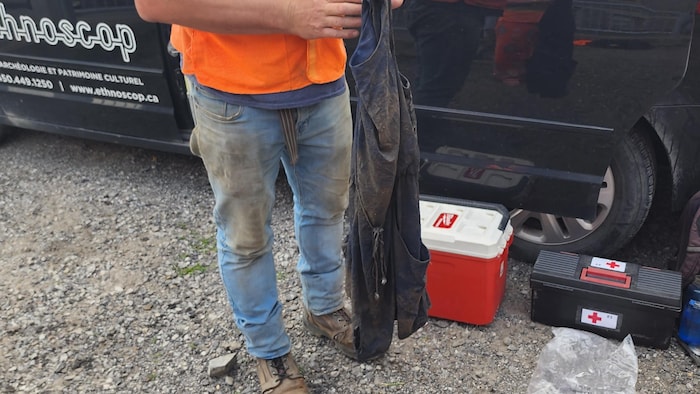
La SQI estime que la robe qui a été trouvée date des années 1990, étant donné sa composition (polyester), sa provenance (Chine) et le fait qu’elle a été trouvée dans une couche de remblai de 1995.
PHOTO : PHOTO FOURNIE
Que disent les experts?
Plusieurs experts que nous avons contactés n’ont pas voulu se pencher sur la question ou ont affirmé ne pas avoir toutes les informations pour pouvoir faire une estimation.
Selon Christian Gates St-Pierre, professeur adjoint au Département d’anthropologie de l’Université de Montréal, plusieurs facteurs aident à déterminer si les éléments trouvés pourraient être associés à des enfants autochtones. Cela dépend si les fragments ont été découverts avec d’autres choses, et s’ils étaient en contexte scellé (intact) ou perturbé (dans des remblais par exemple), nous écrit-il par courriel.
Dans le cas d’une découverte dans un remblai (ce qui semble le cas ici, NDLR), il sera beaucoup plus difficile d’établir un lien entre ces chaussures et les enfants autochtones, précise-t-il, en répétant ne pouvoir se prononcer davantage sans connaître le contexte.
Pour Elizabeth Semmelhack, la directrice et conservatrice principale au Bata Shoe Museum à Toronto, les chaussures en cuir peuvent survivre des milliers d’années selon les conditions. Il y a des épaves du XVIe siècle et d’anciennes tombes égyptiennes qui ont révélé des chaussures, explique-t-elle. Il y a aussi la momie de l’homme Ötzi, qui a été découverte en Europe en 1991, qui avait encore des chaussures en cuir d’il y a 5300 ans.
Après avoir regardé les photos, l’experte avance que la botte ne pouvait pas dater d’avant la seconde moitié du XIXe siècle.
Plusieurs manquements
Philippe Blouin déplore le manque d’échange d’informations entre la SQI et les Mères mohawks, et soutient que ces dernières ne savent pas où se trouvent ces artefacts, s’ils ont été soumis à une analyse ou s’ils ont été mis sous scellés.
Selon lui, la SQI et l’Université McGill ont rejeté les recommandations du panel d’experts prévu par l’entente d’inclure un expert légiste.
Ce dernier souligne également plusieurs manquements, en ce qui concerne la procédure des fouilles, en donnant pour exemple des tas de terres excavées à un endroit qui ne sont recouverts qu’à moitié par des pellicules plastiques, les laissant exposés aux intempéries.
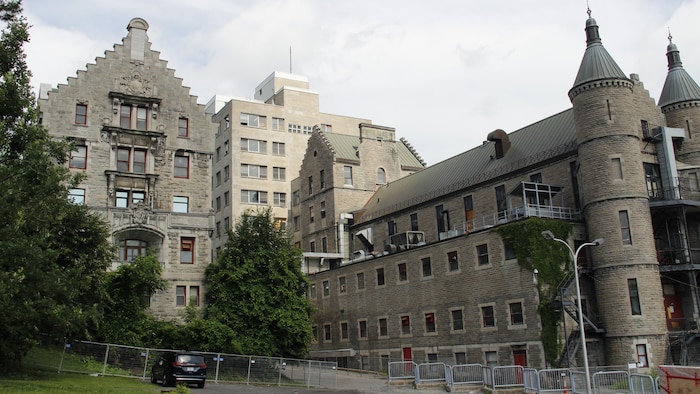
L’ancien hôpital Royal Victoria. (Photo d’archives)
PHOTO : RADIO-CANADA
Par courriel, la SQI rappelle qu’un bioarchéologue est présent lors des travaux de fouille et que le mandat du panel est de recommander des techniques de recherche archéologique dans un objectif de recherche de sépultures.
L’institution ajoute que tous les travaux se déroulent selon les règles de l’art de l’archéologie et par des firmes professionnelles accréditées et que si une découverte de restes humains venait à être faite […] le SPVM, le coroner et le ministère de la Culture et des Communications établiraient les protocoles et prochaines étapes à respecter.
Une entente entérinée en avril 2023
En octobre 2022, une injonction avait été accordée par la Cour supérieure aux Mères mohawks pour stopper les travaux d’excavation destinés au projet de construction du Nouveau Vic, un projet d’agrandissement qui inclurait un pôle de recherche et d’enseignement. En avril dernier, une entente entre le regroupement des Mères mohawks, la SQI, l’Université McGill, l’Hôpital Royal Victoria, le CUSM, la Ville de Montréal et les procureurs généraux du Québec et du Canada avait été entérinée par la cour, donnant ainsi le feu vert à des fouilles archéologiques sur le site. L’entente prévoit l’intervention d’un panel indépendant de trois archéologues.
Désaccord sur l’interprétation d’un rapport
Les points de vue divergent également concernant le rapport rédigé à la suite des scans du sol réalisés par géoradar sur le site. Le rapport, qui date du 26 juillet, identifie neuf zones à probabilité modérée sur le site de l’ancien hôpital Royal Victoria où des caractéristiques géophysiques permettent de croire qu’il pourrait s’agir de potentielles sépultures.
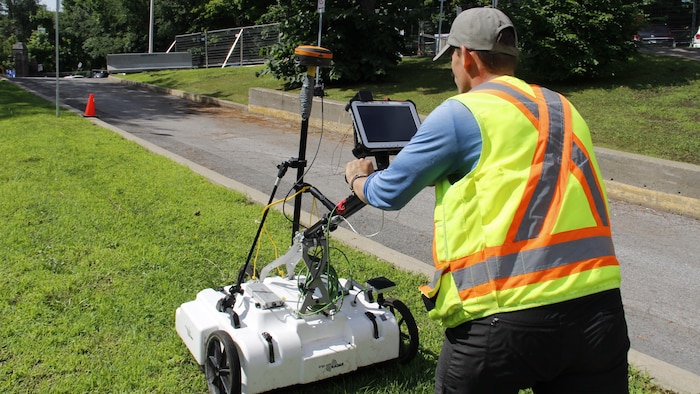
Les recherches par géoradar ont été effectuées du 10 au 12 juillet afin d’étudier la composition et la structure du sol du site de l’ancien hôpital Royal Victoria. (Photo d’archives)
PHOTO : RADIO-CANADA / DELPHINE JUNG
Toutefois, les Mères mohawks regrettent que la SQI et l’Université McGill aient omis d’inscrire dans leurs bulletins d’informations, envoyés régulièrement aux parties prenantes, que le rapport faisait aussi mention d’un nombre important de caractéristiques géophysiques de source inconnue.
Espaces autochtones a pu consulter le rapport. Il y est écrit que c’est une possibilité que ces caractéristiques de source inconnue soient des tombes anonymes, notamment dans le cas d’enterrements plus anciens sans cercueils, ou des tombes de la taille d’un enfant.
Pour Philippe Blouin, le fait que la SQI et l’Université McGill aient omis d’indiquer ces anomalies dans leurs bulletins d’informations signifie qu’elles veulent passer sous silence les données ambiguës du rapport.
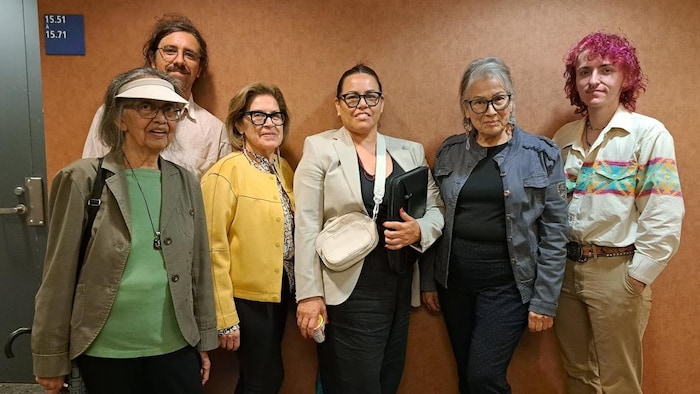
Les Mères mohawks, Karennatha, Karakwine, Kahentinetha et Kwetiio, entourées de l’anthropologue Philippe Blouin, leur accompagnateur, et de l’archéologue Karonhianoron. (Photo d’archives)
PHOTO : RADIO-CANADA / JULIE ROY
Ce dernier soutient également qu’aucun archéologue du panel d’expert n’a pu émettre des recommandations ou réviser les données du rapport. Il y a une interprétation unilatérale des données et ça cause préjudice pour toutes les recherches d’enfants disparus au Canada. Qu’une institution publique comme la SQI détermine unilatéralement [la suite des choses] sans l’avis d’expert, c’est incompréhensible, soutient M. Blouin. La SQI et McGill tentent d’exclure entièrement les Mères mohawks du processus.
La SQI affirme toutefois qu’elle suit les recommandations établies par le panel d’experts qui anticipait ce type de découverte, et que des fouilles manuelles sont prévues dans les zones identifiées comme comportant des anomalies suspectées d’être des sépultures potentielles. Elle ajoute que le rapport a été transmis aux mères et au panel d’archéologues.
